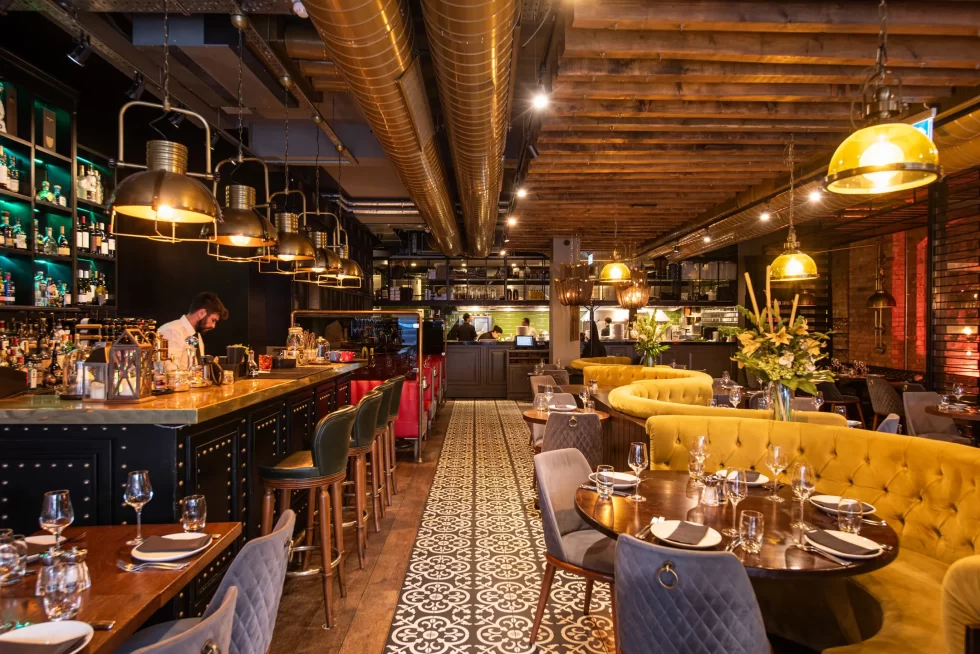
Introduction
In the heart of London’s bustling Fitzrovia district lies a hidden gem that seamlessly weaves the warmth of Turkish hospitality with the vibrancy of the city’s cosmopolitan spirit. Kibele London, located at 175–177 Great Portland Street, is more than just a restaurant—it’s a cultural haven, a stage for live performances, and a celebration of authentic Anatolian flavors. With its unique fusion of old-world charm and modern sophistication, Kibele continues to attract food lovers, artists, and nightlife seekers alike.
A Name with Cultural Roots
The name “Kibele” originates from Cybele, the ancient Anatolian mother goddess known for her connection to fertility, nature, and celebration. In many ways, the restaurant pays homage to these themes through its commitment to abundant hospitality, fresh ingredients, and lively ambiance. The name is more than symbolic; it reflects a culinary and experiential philosophy rooted in tradition, yet reimagined for the modern diner.
A Menu That Celebrates Authenticity
At the core of Kibele’s success is its dedication to traditional Turkish cuisine, prepared with finesse and flair. The menu is a harmonious blend of classic Anatolian recipes and contemporary interpretations, curated to satisfy both newcomers and seasoned food enthusiasts.
Guests can start their culinary journey with a variety of hot and cold mezzes—including hummus, babaganoush, sigara böreği, and freshly made ezme. These small plates are perfect for sharing and offer a sensory introduction to Turkish dining customs.
For mains, signature dishes such as the Adana kebab, Iskender, and lamb shish showcase the restaurant’s ability to capture bold, smoky, and aromatic flavors through traditional charcoal grilling. Vegetarian options are equally compelling, with dishes like imam bayıldı (stuffed aubergine) and falafel platters standing out for their depth of flavor and presentation.
The kitchen’s devotion to fresh herbs, spices, and high-quality meats reflects a culinary discipline often found in the family kitchens of Istanbul and Gaziantep. Every plate is a narrative of heritage, memory, and innovation.
An Interior Designed for Immersion
Step inside Kibele, and you are instantly transported. The interior strikes a perfect balance between rustic charm and modern luxury. Earthy tones, mosaic lanterns, antique mirrors, and dark wood furniture create a cozy yet elegant atmosphere.
The main floor provides a relaxed, intimate setting for dinners and casual lunches, while the downstairs lounge transforms into a dynamic nightlife venue on the weekends. The duality of the space means guests can enjoy a quiet dinner one moment and lose themselves in music and dance the next.
A Cultural Hub: Live Music and Belly Dancing
What truly sets Kibele apart from other London eateries is its live entertainment. On Friday and Saturday evenings, the downstairs lounge comes alive with belly dancing performances, live musicians, and DJs spinning a mix of Turkish, Arabic, and international beats.
These events aren’t just add-ons—they’re part of the restaurant’s identity. Guests are encouraged to join the celebration, whether it’s dancing with the performers or clapping along to the darbuka rhythms. It’s an immersive experience where the boundary between audience and artist is joyfully blurred.
According to loyal patrons, the weekends at Kibele are like “a mini Istanbul nightlife escape” in the heart of London. It’s no wonder the venue is a favorite for birthdays, engagement parties, and group dinners.
The Cocktail Bar: A Hidden Treasure
Tucked away in the lounge is a well-stocked cocktail bar that deserves recognition of its own. The mixologists at Kibele craft inventive cocktails using Eastern Mediterranean ingredients—think pomegranate, rosewater, raki, and Turkish coffee.
House favorites like the Kibele Mule (a take on the Moscow Mule with sumac and ginger) and the Sultana Martini (vodka, rose syrup, and lychee) have gained a devoted following. For those seeking something truly special, the bartenders are happy to mix bespoke drinks based on your flavor preferences.
Service with a Personal Touch
Another pillar of Kibele’s growing popularity is its attentive and personable service. Staff members are often praised for their friendliness, efficiency, and willingness to guide guests through the menu. Whether you’re a first-time visitor or a regular, the team ensures each dining experience feels personal and memorable.
One TripAdvisor reviewer wrote:
“From the moment we walked in, we were made to feel welcome. The staff went out of their way to recommend dishes, explain ingredients, and make us feel part of the Kibele family.”
Such testimonials underscore the restaurant’s ethos—hospitality is not just a service; it’s a cultural duty.
A Growing Social Presence
Kibele’s Instagram page (@kibele.london) reflects its identity in a visually stunning way. With a feed full of tantalizing food shots, videos of belly dancers, behind-the-scenes kitchen stories, and reels of clinking cocktails, the account has become a lifestyle showcase rather than just a restaurant profile.
The restaurant’s digital presence has helped draw in a younger crowd, particularly those looking for dinner spots that offer both ambiance and entertainment. Many patrons discover Kibele through Instagram and end up becoming regulars after their first visit.
Community and Sustainability
Behind the scenes, Kibele also emphasizes community involvement and sustainability. Locally sourced produce, responsible meat procurement, and minimal food waste practices are part of their operational model. They also collaborate with local artists and musicians, offering a platform for cultural expression and exchange.
Conclusion
Kibele London is not just a place to eat—it’s a place to feel, hear, dance, and connect. It’s where culinary artistry meets cultural celebration, and where every meal turns into a memory.
Whether you’re seeking an authentic Turkish meal, a lively night out with music and dance, or a new go-to spot for date night, Kibele offers it all. It’s a London venue that honors the past while dazzling in the present—and it’s only getting started.

